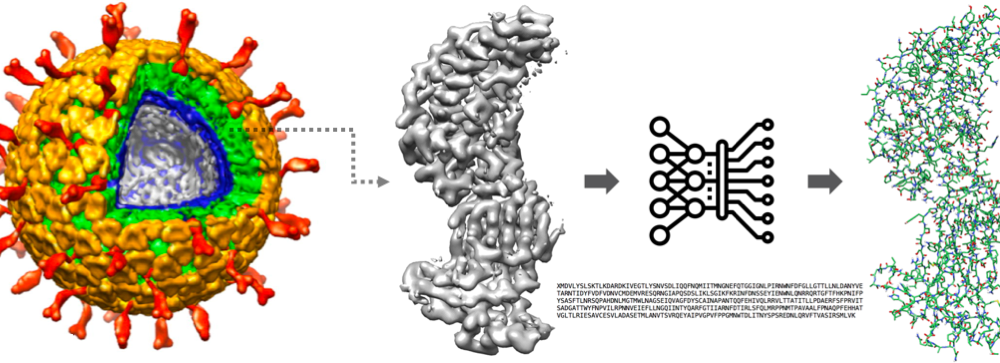DeepTracer, Data Analysis and Machine Learning for 3D Electron Microscopy

We combine software development (front- and back-end), 3D image processing, machine learning, data mining, and geometric modeling techniques for automatic and accurate protein structure prediction based on cutting-edge new technology – Electron cryo-microscopy (cryo-EM).
Background
Life ultimately depends on the interactions of large biological molecules, such as viruses. The nature of these interactions depends on the 3D shape and structure of these molecules. Cryo-EM as a cutting-edge technology has carved a niche for itself in the study of large-scale protein complexes. However, it is still challenging to detect the protein structures automatically and accurately from the 3D EM volume data.
Outcomes
- Prediction tools and software for the Bio-medicine community;
- Smart frameworks for mining large-scale 3D volume data;
- Interactive and user-friendly platform for structure modeling and data visualization
Student Outcomes
Collaborative teamwork, programming skills, problem-solving skills, publication experiences, etc.
Student Qualifications
- Proficient programming and software development skills (Python, GitHub, etc.)
- Foundations in Data Structures, Algorithms, and OOP
- Good understanding of 3D geometry
- Passion for interdisciplinary research and learning new concepts
Student Responsibilities
- Understand, review, and survey the existing literature in 3D visual data analysis and machine learning
- Collaborate with other group members on the testing and implementation of prediction and data analysis algorithms
Time commitment
Minimum commitment of 5 hours a week for 2 quarters with the registration of CSS497, CSS499, or other independent study or faculty research credits. Attend weekly research group meetings.
